1940s to 50s: Lighting the Fire
The ARC
The National Association of Parents and Friends of the Mentally Retarded, now known as "The Arc," held its first national convention in Minneapolis in 1950.
When Governor Youngdahl spoke to the group, he said that people with developmental disabilities had the right to:
- Live with a family
- Go to school
- Reach maximum potential
- Happiness
- Play
- Companionship and respect
- Develop
- Love and affection.

Governor Youngdahl used Arc's first national convention to affirm the rights of people with developmental disabilities.
Governor Youngdahl Makes Nine Speeches
That same year, Governor Youngdahl asked the Legislature for space and staff to be added at state institutions in Faribault and Cambridge to ease overcrowding and address the long waiting list.
Governor Youngdahl made nine speeches on mental health and developmental disabilities issues:
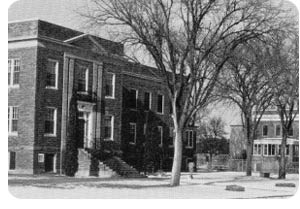
With overcrowding the norm and long lists of people awaiting care, state institutions like Cambridge (above) expanded in the early 1950s.
| Governor Youngdahl Speeches (PDF Documents) | ||
| 1948 | Mental Health Program Press Release | 48-MHP-LWY.pdf |
| 1948 | Radio Statement on Mental Health | 48-SMH-LWY.pdf |
| 1948 | Radio Statement on Mental Hospitals | 48-RSM-LWY.pdf |
| 1949 | The Challenging New Frontier in Mental Health | 49-CNF-LWY.pdf |
| 1949 | Statement by Governor Youngdahl at the Burning of Restraints | 49-SGL-YOUNGDAHL.pdf |
| 1950 | Caring for the Mentally Ill | 50-CMI-LWY.pdf |
| 1950 | Report on Mental Health Progress | 50-RMH-LWY.pdf |
| 1950 | The Retarded Child | 50-TRC-LWY.pdf |
| 1950 | The New Frontier in Mental Health | 50-NFM-LWY.pdf |
The Groundswell of Support for Reform Grows
The groundswell of support for reform continued to grow. In 1950, Geri Joseph published a follow-up series, noting improvements in the state institution system.
Among the improvements: A shared diet for both employees and residents, the nation's first "Patient Bill of Rights," and establishment of the nation's first volunteer services office.
Despite these advances, the "medical model" for treatment continued to prevail. Infants with developmental disabilities were removed from their families shortly after birth and placed in institutions. Some parents even turned their babies over in their strollers to prevent anyone from seeing their children's disabilities. Unfortunately, the medical model continued to be the standard for decades.
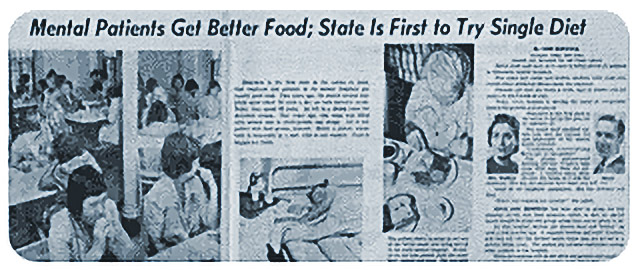
By the 1950s, some improvements were seen.
Governor C. Elmer Andersen Shared Youngdahl's Passion
In 1951, Governor Youngdahl left office and the campaign for improved treatment of people with development disabilities lost one of its greatest champions. Fortunately, his successor, Governor C. Elmer Andersen, shared Youngdahl's passion for improving conditions at state-run hospitals.
In 1954, several years into his four-year term, Governor Andersen requested a report detailing the current condition of state hospitals. Unfortunately, the report wasn't completed until 1956 and was delivered to Andersen's successor, Governor Orville Freeman.
The report on hospital conditions showed that Faribault, one of the largest state hospitals, was more than 60 percent over capacity. The Cambridge facility was grappling with a similar problem, housing twice as many residents as allowed.
By 1954, the waiting list – which had alarmed Governor Hubbard in 1883 when it had 59 children on it – had exploded to include 884 children. Projections indicated that another 400 would be added over the next three years.
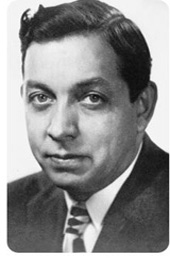
Governor C. Elmer Anderson:
Sharing the Vision
Drastic change was needed. Simply expanding the current system was unacceptable. Two visionaries – John Holahan and Jerry Walsh – came forward with a plan to redesign the way the state cared for people with developmental disabilities. They created a blueprint for a new service system and how it should work. In May of 1957, the state office of Minnesota Arc opened with Jerry Walsh as its first executive director.
Initiating an aggressive information campaign, Miriam Karlins and others at the Department of Public Welfare published a series of booklets for parents describing its services, guardianship and individual planning options available through county welfare departments.
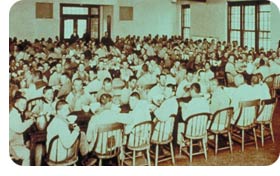
Some facilities routinely operated at 60% over capacity.
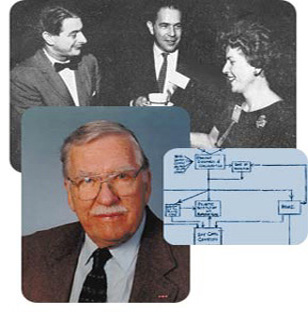
Visionaries Holahan (top middle) and Walsh (bottom) created a blueprint for a new system.

Miriam Karlins initiated an aggressive parent information campaign.
The Groundswell of Support for Reform Grows
In 1957, Dr. Eunice Davis headed an in-depth study of 244 children in four Minnesota counties to determine their needs and better estimate the number of people requiring institutionalization.
Of the nearly 250 children originally identified, about half were evaluated and found to have cognitive disabilities, suggesting that misdiagnosis was a potential problem.
Action-oriented parents continued pushing for change, often contacting the state Commissioner of Education demanding to know why their children with IQs of 48-49 weren't allowed to attend school.
The Commissioner called upon University of Minnesota Professor Maynard Reynolds for help. Dr. Reynolds knew that special education teachers were in short supply but, unfortunately, state funds were not available for training.
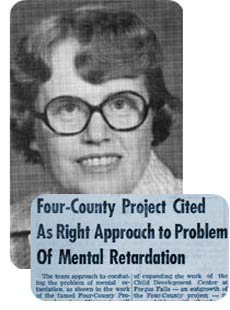
An in-depth study by Dr. Eunice Davis found that almost 50% of children with developmental disabilities could have been misdiagnosed.

Dr. Maynard Reynolds






